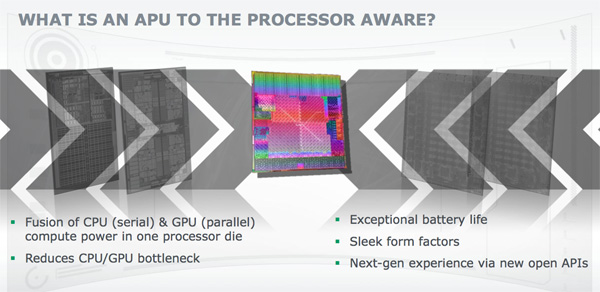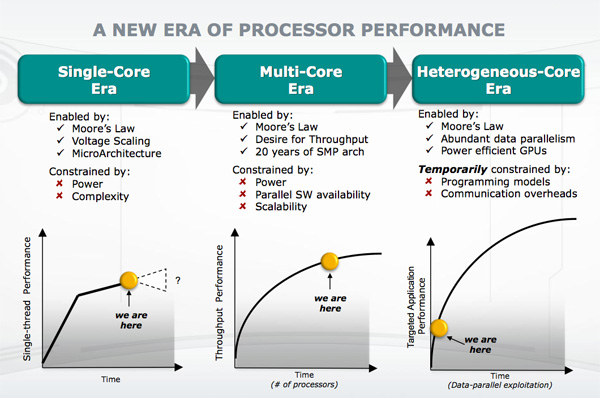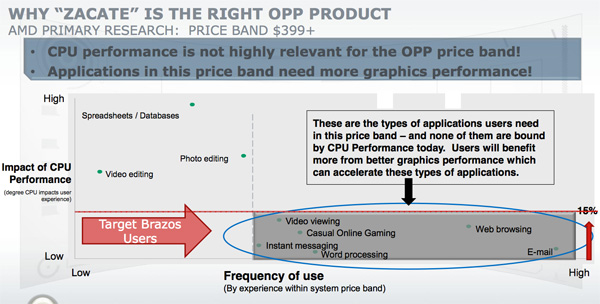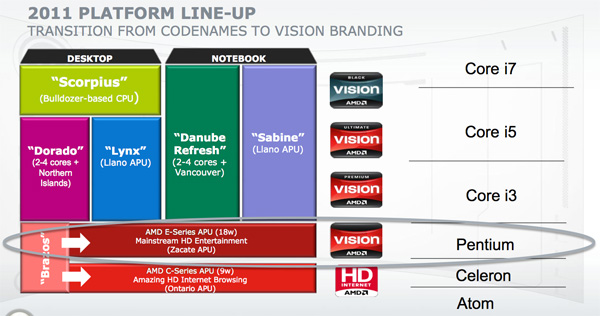Previewing AMD's Brazos, Part 1: More Details on Zacate/Ontario and Fusion
by Anand Lal Shimpi on November 9, 2010 1:09 AM ESTI hate to keep things from you all, but last week I was diligently working in a room at AMD’s new campus in Austin, Texas. You see, AMD wanted to give us more time with the Brazos/Zacate platform we tested at IDF ahead of its official launch. It’s too early for production worthy OEM systems and AMD wasn’t too keen on these reference platforms leaving its offices so it did the next best thing: fly us out to test the systems on AMD’s campus.
The rules were simple. We couldn’t run anything that would harm the system, but other than that we were free to bring whatever we wanted and test however we wanted. AMD dropped by our private room to check to see if we needed anything but other than that, it was all hands off.

The Brazos test platform
While I’d love to share performance data with you today, I can’t. You’ll have to wait another week or so for that. What AMD is allowing us to talk about are the specific configurations AMD’s first Fusion APUs will ship in and general impressions from the testing. Specific benchmarks are off limits unfortunately.
The platform felt final as far as stability goes. I didn’t encounter any crashes during my several hours of non-stop testing. Performance is also indicative of what will ship early next year. The system felt quick (very 11-inch MacBook Air like if you catch my drift) but you have to keep in mind that Zacate and its lower powered sibling Ontario will be used in systems priced between $299 - $549.














106 Comments
View All Comments
Anand Lal Shimpi - Tuesday, November 9, 2010 - link
Fixed :)Take care,
Anand
hvakrg - Tuesday, November 9, 2010 - link
Is there any news on wether or not these Atom competitios will be able to bitstream audio?jabber - Tuesday, November 9, 2010 - link
....had to play on looks a little more complete than the spaghetti fest you chaps got.ET - Tuesday, November 9, 2010 - link
I was hoping that Ontario will bring a significant performance jump over dual core Atom + Ion 2. While there's still a chance it will be faster, I don't think it will be by much.I guess I will have to continue to wait (maybe forever) for a low end platform that would be good for basic gaming. I would happily give up DX11 to get twice as many DX9 cores.
Aone - Tuesday, November 9, 2010 - link
What will we see if we pair mobile Athlon with mobile discrete Radeon 54xx?Will Brazos have the same perf, better or worse?
Lolimaster - Tuesday, November 9, 2010 - link
Fusion Ontario/Zacate has the same performance of current Athlon II / Turion II Neo (same performance as regular (Athlon II).Zacate GPU has lower clocks than of HD5400(500Mhz vs 650Mhz). That's the main difference.
Why people mention CULV when Athlon II / Turion II are there and destroy those options as a cpu/gpu combo(equal cpu perf. way way better gpu perf.)
80SP AMD GPU already surpass ION2 GPU.
ET
What dissapointing? Look any comparison of the current 45nm Neo's, it's a slaughter for the poor Atoms, you'll see the same slaughter with Brazos but with improved battery life and the better gpu(twice the HD4250)
Shadowmaster625 - Tuesday, November 9, 2010 - link
If that thing really uses 4.7W its game over for AMD. No way should that part consume more than a watt. It should not even be there at all. Cant netbook manufacturers skip it entirely, and just go with a low power usb chip instead? What else do you need the FCH for on a netbook or a tablet?llllllllll - Tuesday, November 9, 2010 - link
Eh, the range was 2.7-4.7W TDP, which doesn't imply average power, just max for designing the enclosure.Also, considering 3W is typical for a DIMM of memory, and this thing is driving up multiple SATA, PCI-E, & USB ports (which remember, you have to be able to charge devices over USB), doesn't seem unreasonable that under load it would draw that much power.
Zstream - Tuesday, November 9, 2010 - link
How did you come to this conclusion?"Zacate takes the top two SKUs, while Ontario makes up the bottom two. The difference in TDP is entirely based on the clock speed of the CPU and GPU. And here is my concern. While a pair of Bobcats running at 1.6GHz are just awesome, drop the clock to 1.0GHz and I start getting concerned about performance. AMD didn’t let us test the C-50 but I’m curious to see what the margin of victory will be over Atom at that speed."
If you believe it is 100% on clock speed, we have a ton of leakage.
JarredWalton - Tuesday, November 9, 2010 - link
Doubling the maximum GPU speed and increasing CPU speed 60%, plus added voltage to get it to run properly, could easily result in a doubling of maximum power use.